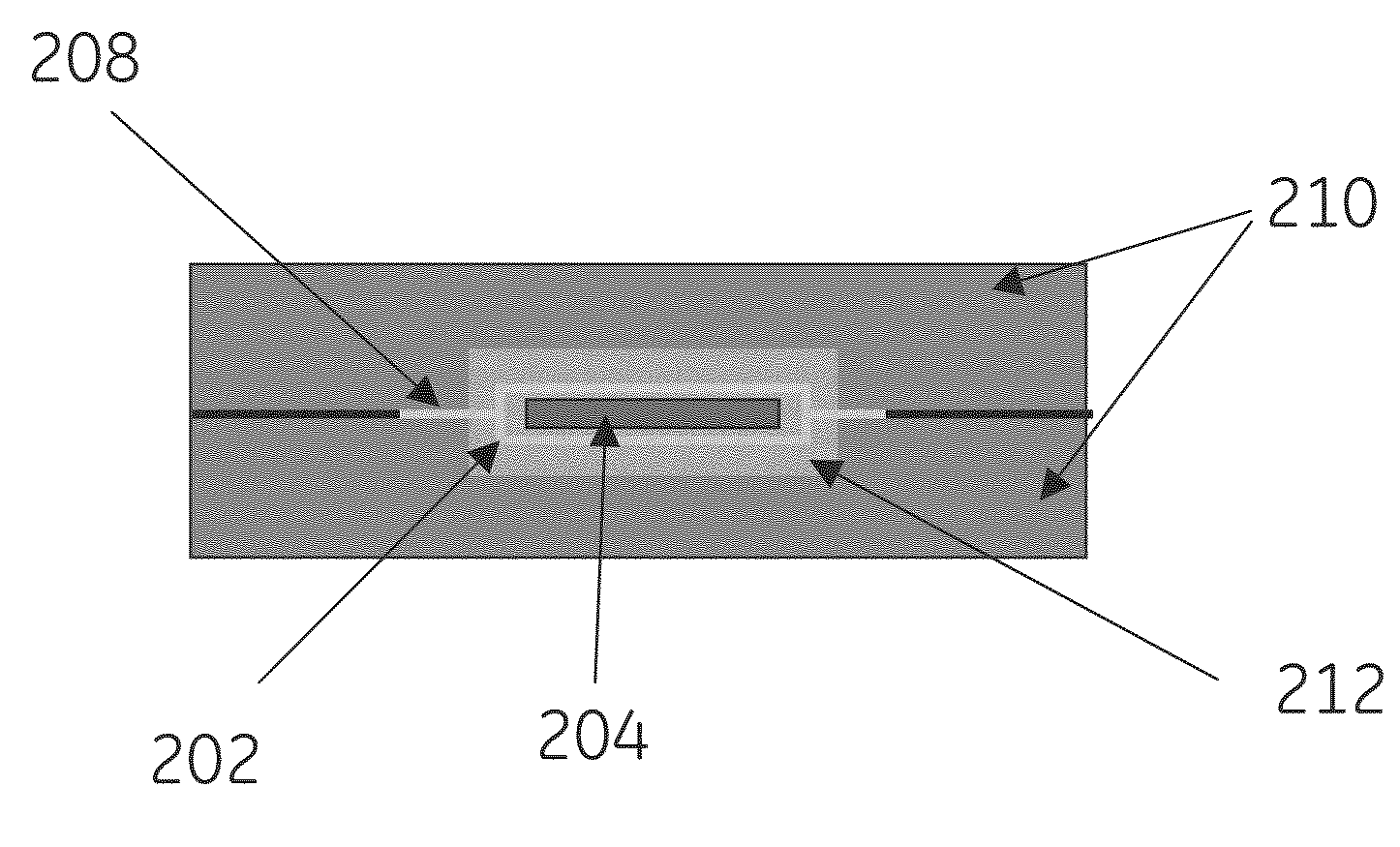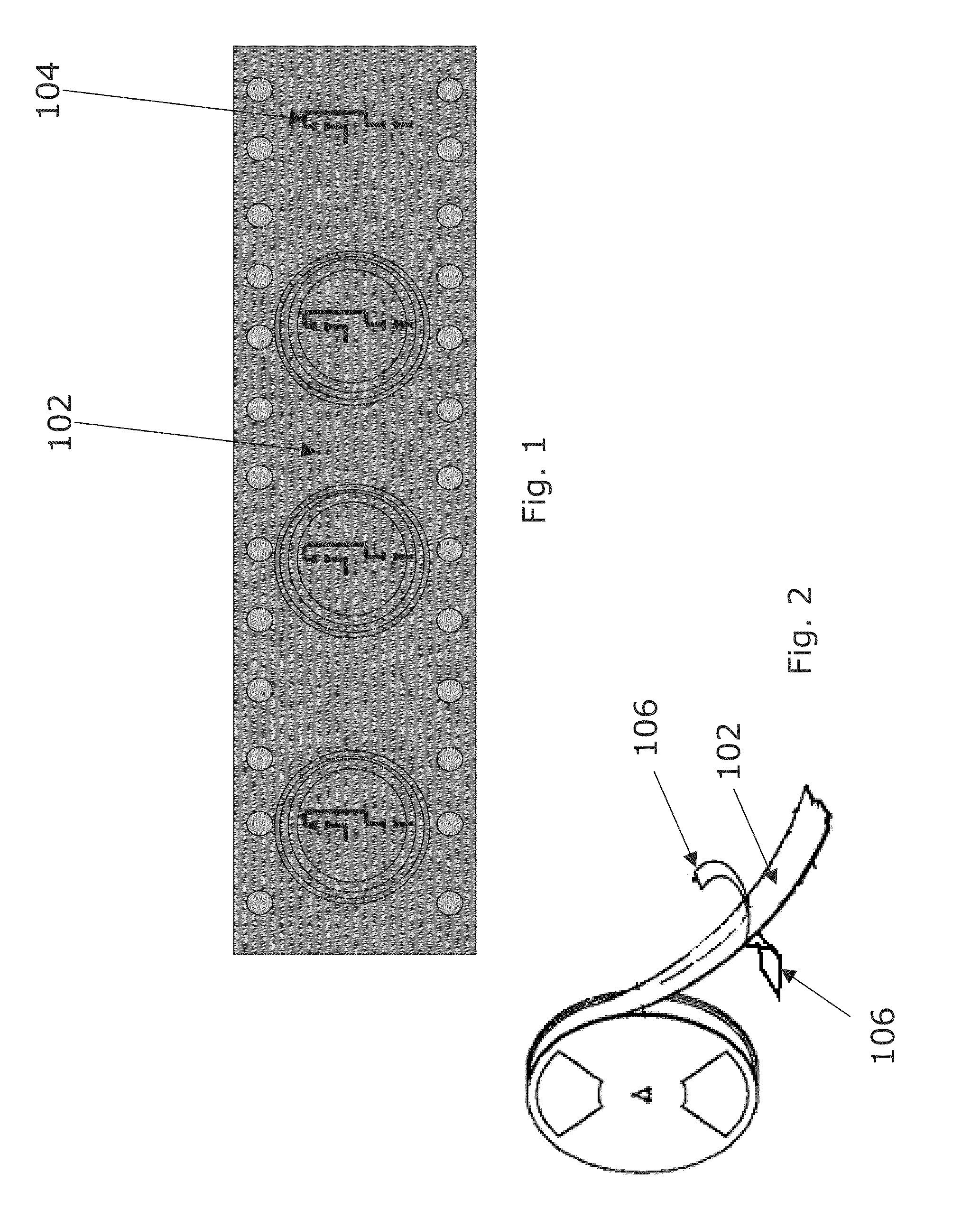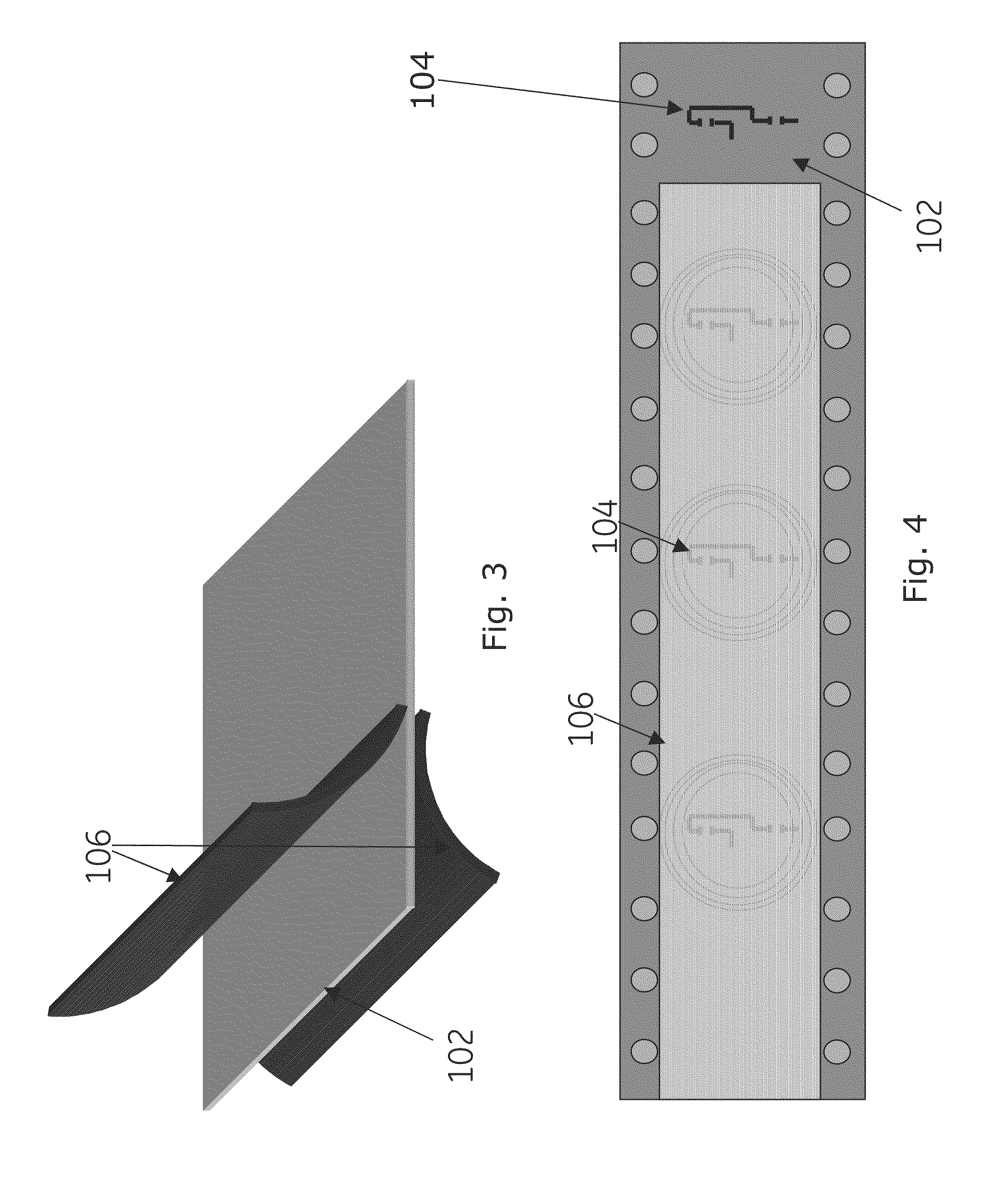Encapsulated RFID tags and methods of making same
a technology of rfid tags and encapsulation, which is applied in the field of encapsulation of rfid articles, can solve the problems of rfid tags that cannot be used, damage the electrical components of rfid tags, and render rfid articles non-functional, etc., and achieve enhanced break strength and/or temperature resistance, and increased temperature resistance
- Summary
- Abstract
- Description
- Claims
- Application Information
AI Technical Summary
Benefits of technology
Problems solved by technology
Method used
Image
Examples
Embodiment Construction
[0023]The present invention is more particularly described in the following description and examples that are intended to be illustrative only since numerous modifications and variations therein will be apparent to those skilled in the art. As used in the specification and in the claims, the term“comprising” may include the embodiments “consisting of” and “consisting essentially of.” All ranges disclosed herein are inclusive of the endpoints and are independently combinable. The endpoints of the ranges and any values disclosed herein are not limited to the precise range or value; they are sufficiently imprecise to include values approximating these ranges and / or values.
[0024]As used herein, approximating language may be applied to modify any quantitative representation that may vary without resulting in a change in the basic function to which it is related. Accordingly, a value modified by a term or terms, such as “about” and “substantially,” may not be limited to the precise value ...
PUM
| Property | Measurement | Unit |
|---|---|---|
| radio frequency | aaaaa | aaaaa |
| frequency | aaaaa | aaaaa |
| break strength | aaaaa | aaaaa |
Abstract
Description
Claims
Application Information
 Login to View More
Login to View More - R&D
- Intellectual Property
- Life Sciences
- Materials
- Tech Scout
- Unparalleled Data Quality
- Higher Quality Content
- 60% Fewer Hallucinations
Browse by: Latest US Patents, China's latest patents, Technical Efficacy Thesaurus, Application Domain, Technology Topic, Popular Technical Reports.
© 2025 PatSnap. All rights reserved.Legal|Privacy policy|Modern Slavery Act Transparency Statement|Sitemap|About US| Contact US: help@patsnap.com



